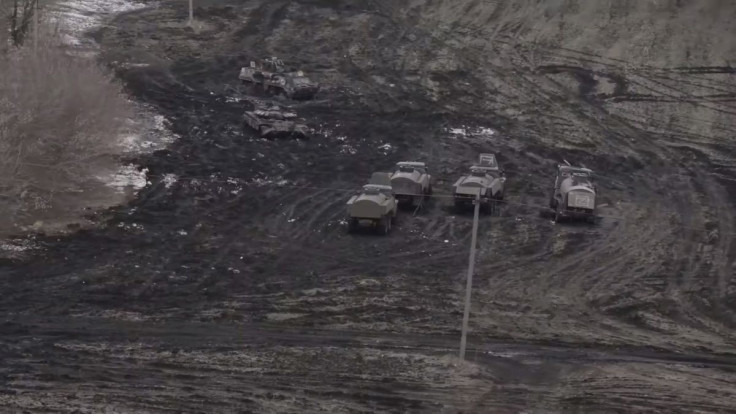Dramatic Video Shows Russian Attack Choppers Performing 'Extraordinary' Maneuver To Fire Rockets
KEY POINTS
- The choppers are seen launching unguided rockets over an unidentified location in Ukraine
- This is extraordinary as the choppers are seen firing the rockets upward in a parabolic trajectory
- This tactic is unusual for unguided 80mm caliber rockets as this will affect their accuracy
Amid reports that cast doubts over the involvement and tactics of the Russian Air Force in the Ukrainian invasion, an interesting video has emerged showing two Russian attack helicopters performing an unusual maneuver while firing rockets.
The one-minute video, doing rounds on social media, features two Russian Aerospace Forces or VKS choppers, a Ka-52 Hokum and Mi-28N Havoc. The choppers are seen launching rockets, likely unguided 80mm caliber rockets over an unidentified location in Ukraine, possibly near Popasna, reported The Drive.
The footage shows the helicopters starting from low altitude. They then pull up in what could be described as a steep climb, flinging rockets as they gain altitude. They were also seen ejecting infrared decoy flares, a mechanism to counter "heat-seeking" missiles. In most cases, the magnesium in the flares burns at more than 1,000ºC, hotter than the engine exhaust of the aircraft, enough to attract a heat-seeking missile. In Russia's case, this helps counter the man-portable air defense systems (MANPADS), a weapon that Ukraine heavily depends on.
The helos then take a swift left turn, and dive down to lower altitude before flying away.
According to The Drive, while VKS attack helicopters usually carry unguided rockets and anti-tank guided missiles, what makes this footage "extraordinary" is the way the rockets are fired.
The rockets that are fired by the choppers are unguided ones and have to be aimed and fired, much like a rifle, to hit the target. But to do that would be suicidal for the choppers because of the Ukrainians' deft use of MANPADS.
So the Russian choppers come in low, make a quick climb in the general direction of the target, and before completing the climb, fire the rockets — up toward the sky. They then veer away, nose down quickly and exit the area at low altitude giving very little reaction time to the Ukrainians with the MANPADS.
The rockets fired into the sky, then take on a long arcing trajectory to ultimately fall somewhere in the general target area. The technique, which uses the amazing capabilities of Russian ground attack choppers, is terrible for accuracy. It is much like the multiple rocket launchers that Russian troops used against the Nazis during World War II. The terrible sound of their firing created panic among German troops, who nicknamed them Stalin's organs. Putin's troops may be trying to get the same psychological advantage over the Ukrainians by raining unguided rockets this way from choppers, while at the same time staying out of the reach of the MANPADS.
Another explanation could be that these choppers are indiscriminately raining down the rockets on a wide area, especially on "soft-skimmed military vehicles or personnel." There is also a possibility that these rockets are being used more for psychological value against a non-military target, The Drive reported.
This, however, is a recipe for disaster as a low, slow flight profile along the front line puts Russian fighters and attack planes in range of man-portable air-defense systems such as the Strela, Igla and Stinger.

© Copyright IBTimes 2025. All rights reserved.





















